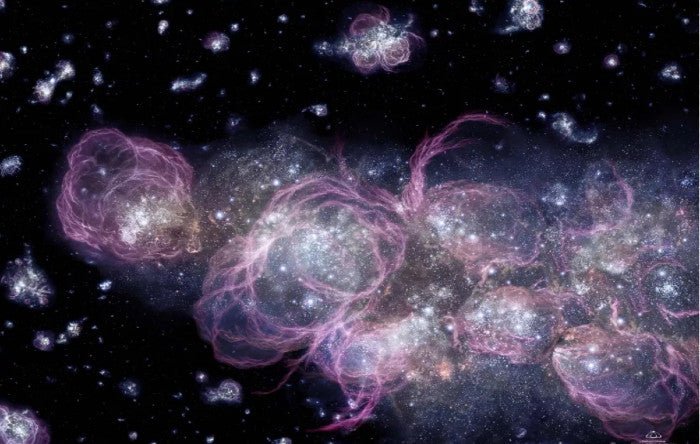Article: There's "Too Much Gold" In The Universe Physicists Don't Know Where It Comes From

There's "Too Much Gold" In The Universe Physicists Don't Know Where It Comes From
There is "too much gold" in the Universe, and physicists do not know where the precious metal comes from. But there is definitely something out there that produces a lot of it.
Scientists have discovered that gold is one of the most abundant chemical elements in the universe, and they admit that they do not know where this precious metal comes from.
According to a study at the University of Hertfordshire in the United Kingdom, presented by Live Science, the previously alleged origin of gold in the cosmos - collisions between neutron stars - can not in fact explain the abundance of this metal.
Gold is a chemical element, which means that it cannot be formed as a result of ordinary chemical reactions - although alchemists have tried to obtain gold for centuries.
To obtain a gold atom it is necessary to bond 79 protons and 118 neutrons together to form a single atomic nucleus. Such an element requires a very intense nuclear fusion reaction. But such fusion reactions do not occur often enough, at least in our part of the cosmos, to explain why there is so much gold on Earth and on other bodies in the Solar System.
Collisions between neutron stars do not occur often enough to explain the abundance of gold in the cosmos, which means that there are other unknown gold-producing mechanisms, such as supernova-type stellar explosions.
Exploring the Mysteries of the Origin of Gold
Collisions between neutron stars produce gold by colliding protons and neutrons together in atomic nuclei, but compared to the abundance of gold in the Universe, collisions between neutron stars occur too rarely to be the only valid explanation.
On the other hand, supernova-like phenomena cannot explain the abundance of gold in the Universe either because stars massive enough to fuse gold from lower-mass elements before entering the supernova stage are very few, and in most In some cases, the gold obtained by fusion in these stars is permanently lost when, after the supernova stage, the dying star becomes a black hole, as explained by Chiaki Kobayashi, an astrophysicist at the University of Hertfordshire, the coordinator of the study.
Neither neutron stars nor magneto-rotating supernovae together are enough to explain the abundance of gold
But there is a special and very rare type of supernovae, the so-called "magneto-rotating supernovae," which, according to Kobayashi, are extremely fast-rotating supernovae.
Imagine credit: NASA/ Adolf Schaller
In a magneto-rotating supernova, a dying star rotates so fast and is pressed by magnetic fields so strong that at the moment of the explosion it turns upside down. As it dies, such a star throws into space white, incandescent jets of matter, and because it has already turned upside down, these jets abound in gold atoms. Thus, if stars that can fuse gold into their nucleus are rare, stars that can fuse gold and then scatter it into space are even rarer, explained Kobayashi.
But neither neutron stars nor magneto-rotating supernovae together are enough to explain the abundance of gold on Earth, Kobayashi said.
"This problem has two levels. Firstly, the collisions between neutron stars are not enough. Secondly, even if there is a second source of gold, we still cannot explain why there is so much gold," the expert said.
Previous studies have been right that collisions between neutron stars scatter a "golden shower" in the surrounding space. But these studies did not take into account the rarity of these collisions. It is very difficult to accurately estimate how often small neutron stars - themselves the ultra-dense remnants of ancient supernovae - collide with each other. But it's certainly not very common. Scientists have observed only one such event.
Even the most optimistic estimates show that such stars do not collide often enough to produce all the gold in the Solar System, according to a study published by Kobayashi and her colleagues.
Gold Remains An Enigma! There Is Something Out There That Produces A Lot
"This paper is not the first to suggest that collisions between neutron stars are an insufficient explanation for the abundance of gold," said Ian Roederer, an astrophysicist at the University of Michigan who is looking for traces of rare elements in distant stars.
But the study published by Kobayashi and her colleagues in The Astrophysical Journal has a big advantage: it is extremely thorough, according to Roederer. The researchers analyzed mountains of data and generated robust computer models of galaxy evolution and the production of new chemicals.
"The paper contains references to 341 other publications, which is about 3 times more references than the typical papers published by The Astrophysical Journal these days," Roederer told Live Science.
Gold remains an enigma! There is something there that scientists don't know anything about yet, and that produces a lot of gold, Kobayashi points out.
















